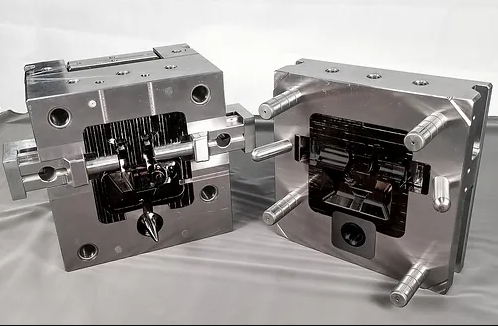Introduction:
Aluminum casting molds play a crucial role in the manufacturing industry, allowing the production of various products with a high level of accuracy and precision. The quality of the mold directly impacts the final outcome, making it essential to employ expert techniques and tips to create high-quality aluminum casting molds. In this article, we will explore some of these techniques and tips.
1. Understanding the Casting Requirements:
Before starting the mold creation process, it is crucial to have a clear understanding of the casting requirements. This includes determining the size, shape, and intricacies of the final product. By thoroughly understanding the requirements, you can ensure that the mold is designed and created accordingly, resulting in a high-quality end product.
2. Material Selection:
The choice of material for the mold is vital to achieve high-quality results. Aluminum molds are preferred due to their excellent heat transfer properties and durability. However, it is important to select the right type of aluminum alloy based on the casting material and the desired surface finish. Some common aluminum alloys used for molds include A356, 356, and 319.
3. Proper Mold Design:
Designing the mold with precision is essential for creating high-quality aluminum casting molds. The design should incorporate features such as gating and risering systems to ensure proper flow of molten metal and avoid defects like porosity and shrinkage. Utilizing computer-aided design (CAD) software can greatly assist in creating accurate and complex mold designs.
4. Mold Fabrication Techniques:
There are several techniques employed in the fabrication of aluminum casting molds, including sand casting, investment casting, and permanent mold casting. Each technique has its advantages and limitations. Sand casting is a common and cost-effective method, while investment casting allows for intricate designs. Permanent mold casting, on the other hand, offers high dimensional accuracy and repeatability.
5. Surface Preparation:
Achieving a smooth and defect-free surface on the mold is crucial to obtain high-quality castings. Proper surface preparation involves removing any imperfections, burrs, or rough patches from the mold surface. This can be achieved through various techniques such as machining, grinding, or polishing. A smooth mold surface ensures better metal flow and minimizes the risk of defects.
6. Heat Treatment:
Heat treatment of the mold is often necessary to enhance its mechanical properties and prolong its lifespan. The mold can be subjected to processes like preheating, solution treatment, and aging to improve its hardness and strength. Proper heat treatment can also help in reducing thermal stresses and preventing premature mold failure.

7. Regular Maintenance:
To ensure the longevity and consistent quality of aluminum casting molds, regular maintenance is essential. This includes inspecting the mold for any signs of wear, cracks, or damage and addressing them promptly. Additionally, applying mold release agents before each casting cycle can help in improving mold life and ease of release.
Conclusion:
Creating high-quality aluminum casting molds requires expertise, precision, and adherence to specific techniques and tips. By understanding the casting requirements, selecting the right materials, employing proper mold design and fabrication techniques, and focusing on surface preparation, heat treatment, and regular maintenance, manufacturers can produce superior aluminum castings. Investing time and effort into these aspects will ultimately result in enhanced product quality, reduced defects, and improved overall efficiency in the casting process.
-

- Παιδικό ποδήλατο από κράμα αλουμινίου μαγνησίου 3-8 ετών Φτηνές εκπτώσεις Παιδικό ποδήλατο 14 ιντσών FOREVER Χονδρικό 2022
-

- Magnesium alloy foundry parts bicycle frame CNC machining & surface finishing
-

- Thixomolding parts & components cell phone middle board processed
-

- Στήριγμα αυτόματου ταμπλό μηχανικής κατεργασίας CNC
-

- Εξατομικευμένη μεταλλική μεσαία πλακέτα macbook κατασκευασμένη
-

- 2022 Χονδρική Hot Sale Ανταλλακτικά ποδηλάτων από κράμα μαγνησίου Παιδικό ποδήλατο χωρίς ισορροπία πεντάλ Παιδικά Πολλαπλά χρώματα Διαθέσιμα

 0086-750-5616188
0086-750-5616188 +86 13392089688
+86 13392089688 sales@zhongmei-tech.com
sales@zhongmei-tech.com







